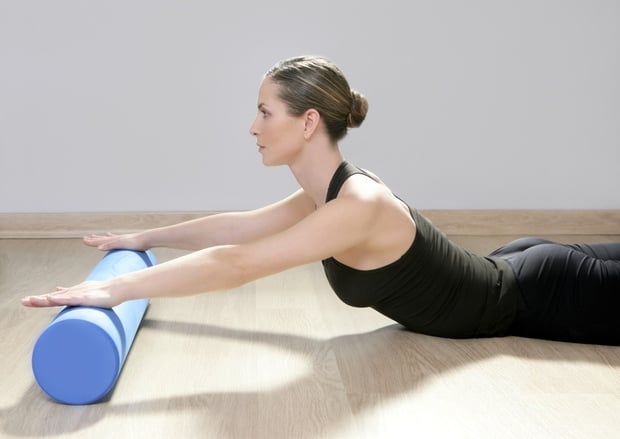With the popularity of any new fitness fad comes plenty of criticism and doubt. And it’s no different for foam rolling, a method of stretching and therapy for sore muscles that requires use of a roller and one’s own bodyweight.
But the popular therapy—which even has its own fitness class at Sport & Health—looks strange and even a little awkward when performed. And does it actually work? We turned to local physical therapist Dr. Jamey Schrier to explain the method and whether it’s worth incorporating it into our daily workouts.
Tell me a bit about the history of foam rolling. How have you seen its popularity grow in recent years?
Foam rolling has been around since the ’70s. It was adopted by physical therapists, primarily, who used it in their practices. I’ve been practicing since the mid-’90s—I don’t know of a practice that does not use foam rollers in some way with their patients. It seems like lately it’s seems to become more popular, and I can’t tell you why.
What is the main purpose of foam rolling?
Foam rolling has several purposes. Probably the most common use is for flexibility and range of motion. It can help increase the extensibility of soft tissue. I had a patient the other day who was taking aerobics and had a strained hip and quad, and we used foam roll to help her release the area and give it more flexibility. In the PT world, we use it for balance, core strength, and general strength.
When you talk about “releasing” a muscle area, are you referring to myofascial release?
Yes. Fascia is the framework of your body. For example, when you eat red meat and get that white stuff in your teeth, that’s not the muscle. It’s the white stuff, or the fascia, which keeps everything together and keeps you in place. So people who have tight muscles don’t really have tight muscles—their fascia is tight. That’s where the whole foam rolling thing comes in. You’re releasing fascia, which increases flexibility.
What are some common parts of the body you can foam roll?
A lot of people have challenges with posture. So the one thing you can do with the foam roller is lie on it with your tailbone on one end, your head on the other, and put your arms out to the side and lie there for about five minutes. That helps with posture, because gravity pushes down and opens up the chest, increasing flexibility in front and relaxing the spine. From that position, you can do a ton of exercises to help with core-strengthening and strengthening of stomach and back muscles.
When you go to a gym, it’s likely you’ll see people using it for legs, thighs, and gluts. We also see it a ton with runners. Runners have tight IT bands, thighs, and calves, and they rub on that foam trying to release the fascia.
How long should you foam roll for?
If you’re using on the calves, for example, foam roll for 30 seconds to a minute. Some people can do up to five minutes. It depends what level you’re at. For someone who has tightness in there, a physical therapist may say, “Use it for a minute and repeat several times up to five minutes.”
Are there any don’ts with foam rolling?
As with any exercise device, you can definitely use it improperly. My recommendation is to get evaluated by a physical therapist so you know areas that need to be treated and can be shown how to treat them properly. If you try to grab it and start pressing on your IT band and putting bodyweight on that, you’re just going to cause yourself a lot of pain. There aren’t a terrible number of injuries sustained from it, but if there is an injury it’s usually because the user is not educated [in how to use it].
Is there an age group or gender that should not try foam rolling?
For men and women, there is no difference—and there’s no age limit. You can use it on a 70-year-old for flexibility, since it’s releasing soft tissue and as we get older that gets tighter and tighter. It’s just a really great exercise device to use, as long as the person can handle it and understands how to use it.


















